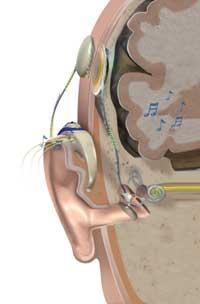The sooner we learn languages the better

Children begin to speak at the age of two, but have already internalized the language. And, even if it seems surprising, before birth, they also distinguish the language used by the mother and the rest. And when she is in her mother's womb she may not understand what she says, but she knows her melody and her rhythm.
In short, what we assimilate before is the melody of the mother tongue, and then we learn the lexicon (words and their meaning) and the order of words (grammar). Therefore, in adulthood, when learning a new language, words are learned with relative ease, but the melody, the most basic, is more difficult. And although it dominates the new language quite well, it is difficult to give the proper melody: it has a lot to do with another native language.
Therefore, the first months are the easiest to assimilate. Apparently, activity in the brain zones (left hemisphere) related to language is frenetic and the relationships between neurons are very flexible. However, as age increases, this activity slows down and neuronal connections become more rigid and fixed. Therefore, it is increasingly difficult to create new connections.
Children in the laboratory

As for the learning capacity of the language, the research carried out with deaf children is especially interesting, which when they have auditory implants have to learn a ‘new’ language. A group of researchers from Indianapolis has published a study on this subject, which indicates that it is appropriate to apply the implant to deaf children before they are two years old, since from there the ability to learn the language is decreasing.
It was known that children receive the language base up to two or three years of age, but it has been a surprise to see that afterwards the ability to learn the language is reduced.
The research has been carried out with 96 children up to 4 years who have been subjected to an implant. It seems that students between two years of age easily learned the language, while those between three and four years of age did it more slowly. In view of this, it is advisable that the implants should be installed as much as possible before the two years. In Euskal Herria, for example, deaf children are given the implant at twelve months.
However, it is the ideal time for learning sign language, and some associations of deaf have responded to these researchers that once the implant is installed, the sign language should not be abandoned. The truth is that, regardless of whether the implant is placed or not, many deaf people begin to learn the language of signs very late and, therefore, it costs them more.

The implant is placed on the upper part of the ear (snail). In short, it powers a performance similar to that of a conventional ear: the exterior sound is transformed into an electrical signal. After implantation, the brain must learn to interpret this electrical signal, that is, to find meaning to sounds.
Previously, other research has been carried out to see the capacity of children who have not had contact with the language, but have been with children who have had traumatic experiences: children who have started alone or who have barely heard. And in them it has been seen that it costs them much to assimilate the language. But in these cases other variables must be taken into account: these children also had a lack of love and their relationship with people was very special. Consequently, the results obtained from these studies could not be extrapolated to children with a normal life.
Working with young children is not easy, it is convenient to use the simplest possible experiments. For example, to know if a newborn child distinguishes the mother tongue from another child, they do so as follows: They look at the strength and frequency it makes to pull a suck or tetina, which shows whether it draws attention or not. To know if the older children understand the meaning of words and phrases, they use cartoons and children's TV shows: they follow the movement of the child's eyes to know where he looks. In this way, they discover the image with which they relate what they hear.

It seems that by the time the child speaks, he has acquired a lot of language. Before saying the first word, play with the sounds; as when you learn to grab a toy or a finger from your parents, there is a learning process: it strives and strives, sometimes it doesn't turn out and others do. That's why, at first, the child makes little sounds — he begins to say the little ones — and later begins to say full words.
Children learn to speak easily and effectively; they can serve as an example for robots to learn to speak. But from that perspective it is not as simple as it seemed.
Published in 7K.
Buletina
Bidali zure helbide elektronikoa eta jaso asteroko buletina zure sarrera-ontzian











